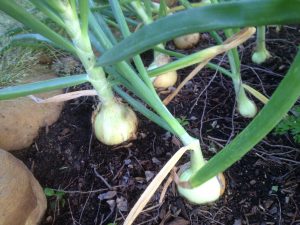 Gardening season has arrived. Things you need to know are the square footage of your garden and what’s in the soil, nutritionally speaking. If you don’t know, then do a soil test. For gardens, I recommend a soil test every 18 months to 2 years. The reason is different crops use nutrition at different rates. Since most folks grow 2 to 4 crops a year, testing is critical. Once you have the results, picking amendments become easier.
Gardening season has arrived. Things you need to know are the square footage of your garden and what’s in the soil, nutritionally speaking. If you don’t know, then do a soil test. For gardens, I recommend a soil test every 18 months to 2 years. The reason is different crops use nutrition at different rates. Since most folks grow 2 to 4 crops a year, testing is critical. Once you have the results, picking amendments become easier.
Next, you need a good crop rotation plan. Everyone should know this by now but even so, I still talk to folks that insist on planting the same crop in the same spot year after year.
Onion sets (45 – 50 onions in a set) are here! Plant onions as soon as they become available in full sun and well-drained soil that is loose to about eight inches deep. Onions should be planted deep enough to hold up the plant and about four to six inches apart. Once a root system is established (about three weeks) pull some of the dirt away from the top to expose the bulb to sunlight. Don’t let them get thirsty. Onions require good moist soil during the first part of the growing cycle. Once the bulbs start to form, moisture becomes less of an issue.
Onions require more fertilizer than most garden crops. They really enjoy moderate nitrogen (1st number) and high phosphate (2nd number) fertilizers. The fertilizers that work well are Ferti-lome Tomato/Vegetable (7-22-8), Hi-Yield garden fertilizer (8-10-8), and 13-13-13 from Agrium. Apply fertilizer when you prepare the bed. I have also used Wells Brothers “Jump Starter” or bone meal when planting. At three weeks, top dress with fertilizer and then again when the bulb starts to grow. I also fertilize every three weeks or so until the end of April. You should be harvesting onions towards the end of May.





